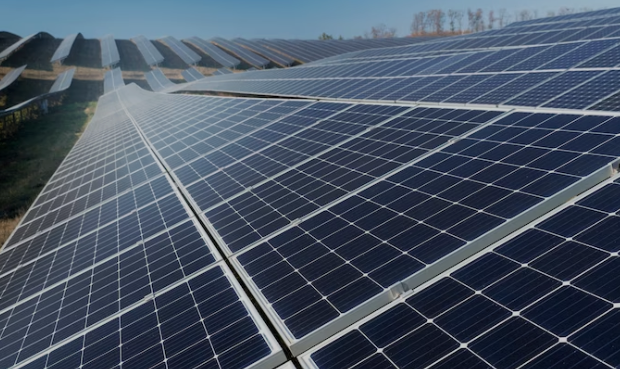The Power of Solar Energy: Transforming Homes and Communities
In an era marked by environmental consciousness and a growing emphasis on sustainability, the adoption of solar energy has emerged as a powerful solution to mitigate climate change and reduce reliance on fossil fuels. Solar power not only offers homeowners the opportunity to generate clean, renewable electricity but also has the potential to transform entire communities by fostering energy independence, resilience, and economic growth. In this guest post, we will explore the transformative power of solar energy and its profound impact on homes and communities.
Harnessing Clean, Renewable Energy:
At its core, solar energy harnesses the power of sunlight to generate electricity through photovoltaic (PV) cells, which convert sunlight into usable electricity. Unlike fossil fuels, which emit harmful greenhouse gases and contribute to climate change, solar energy produces no emissions and relies on an abundant and inexhaustible energy source—the sun.
By installing solar panels on rooftops or ground-mounted arrays, homeowners can generate their electricity and reduce their dependence on grid-supplied power. This not only helps lower electricity bills but also reduces carbon emissions, mitigating the harmful effects of climate change and promoting environmental sustainability.
Empowering Homeowners with Energy Independence:
One of the most significant benefits of solar energy is its ability to empower homeowners with energy independence. By generating their electricity, homeowners are less susceptible to fluctuations in energy prices and disruptions in the power grid. This resilience is particularly valuable during natural disasters or grid outages when access to electricity is critical for safety and security.
Additionally, solar energy offers homeowners the opportunity to take control of their energy future and reduce their reliance on traditional utility companies. Through net metering programs, homeowners can earn credits for excess electricity generated by their solar panels and offset the cost of electricity purchased from the grid, further enhancing their energy independence and financial savings.
Fostering Sustainable Communities:
Beyond individual homes, solar energy has the potential to transform entire communities by fostering sustainability, resilience, and economic growth. Community solar projects, where multiple households or businesses share the benefits of a single solar installation, offer a scalable and inclusive approach to solar energy adoption.
Community solar projects can be particularly beneficial for low-income communities and underserved populations, providing access to clean, affordable energy and reducing energy burdens. By leveraging economies of scale and pooling resources, community solar projects can lower the cost of solar installation, making solar energy more accessible and equitable for all.
Furthermore, solar energy stimulates local economies by creating jobs, attracting investment, and supporting small businesses in the renewable energy sector. From solar installers and manufacturers to engineers and consultants, the solar industry offers a diverse range of employment opportunities that contribute to economic growth and prosperity.
10 Practical Tips for Harnessing Solar Power at Home
- Evaluate Your Energy Needs: Start by assessing your household’s energy consumption to determine the size and scope of your solar energy system. Reviewing your utility bills and understanding your average monthly usage patterns will help you size your system appropriately.
- Assess Your Roof’s Suitability: Evaluate your roof’s orientation, angle, and available space to determine its suitability for solar panel installation. A south-facing roof with minimal shading is ideal for maximizing solar energy generation.
- Research Incentives and Rebates: Take advantage of available incentives, tax credits, and rebates offered by governments, utilities, and other organizations to offset the upfront costs of solar installation. Researching and applying for these incentives can significantly reduce your out-of-pocket expenses.
- Choose High-Quality Equipment: Invest in high-quality solar panels, inverters, and mounting hardware to ensure the reliability and longevity of your solar energy system. While quality equipment may come with a higher upfront cost, it can provide better performance and durability over time.
- Explore Financing Options: Investigate financing options such as solar loans, leases, and power purchase agreements (PPAs) to make solar energy more affordable and accessible. These financing solutions allow you to spread out the cost of solar installation over time or pay for the electricity generated rather than the panels themselves.
- Work with a Reputable Installer: Choose a reputable solar installer with experience, certifications, and positive customer reviews. Working with a professional installer ensures that your solar energy system is designed, installed, and maintained to industry standards for optimal performance and safety.
- Optimize System Design: Collaborate with your solar installer to optimize the design of your solar energy system based on your energy needs, roof characteristics, and budget constraints. A well-designed system will maximize energy production and savings over the lifespan of the system.
- Monitor System Performance: Invest in a monitoring system to track your solar energy system’s performance and energy production in real-time. Monitoring systems allow you to identify any issues or inefficiencies early on and optimize the performance of your system for maximum savings.
- Stay Informed: Stay informed about advancements in solar technology, changes in regulations, and updates to incentives and rebates that may affect your solar energy system. Keeping abreast of industry developments ensures that you can make informed decisions about your solar investment.
- Practice Energy Efficiency: Combine solar power with energy-efficient practices to further reduce your energy consumption and maximize savings. Simple measures such as using energy-efficient appliances, sealing air leaks, and insulating your home can complement your solar energy system and enhance its effectiveness.
Conclusion:
The transformative power of solar energy extends far beyond individual homes, shaping communities, and economies while paving the way towards a more sustainable and resilient future. By harnessing clean, renewable energy from the sun, homeowners can achieve energy independence, lower electricity bills, and reduce their environmental footprint.
Moreover, community-based approaches to solar energy adoption can extend these benefits to entire neighborhoods and populations, fostering inclusivity, equity, and shared prosperity. As we strive to address the urgent challenges of climate change and energy insecurity, solar energy stands as a beacon of hope, empowering individuals and communities to embrace a brighter, more sustainable tomorrow. Through collaboration, innovation, and collective action, we can harness the power of solar energy to transform homes, communities, and the world for generations to come.







